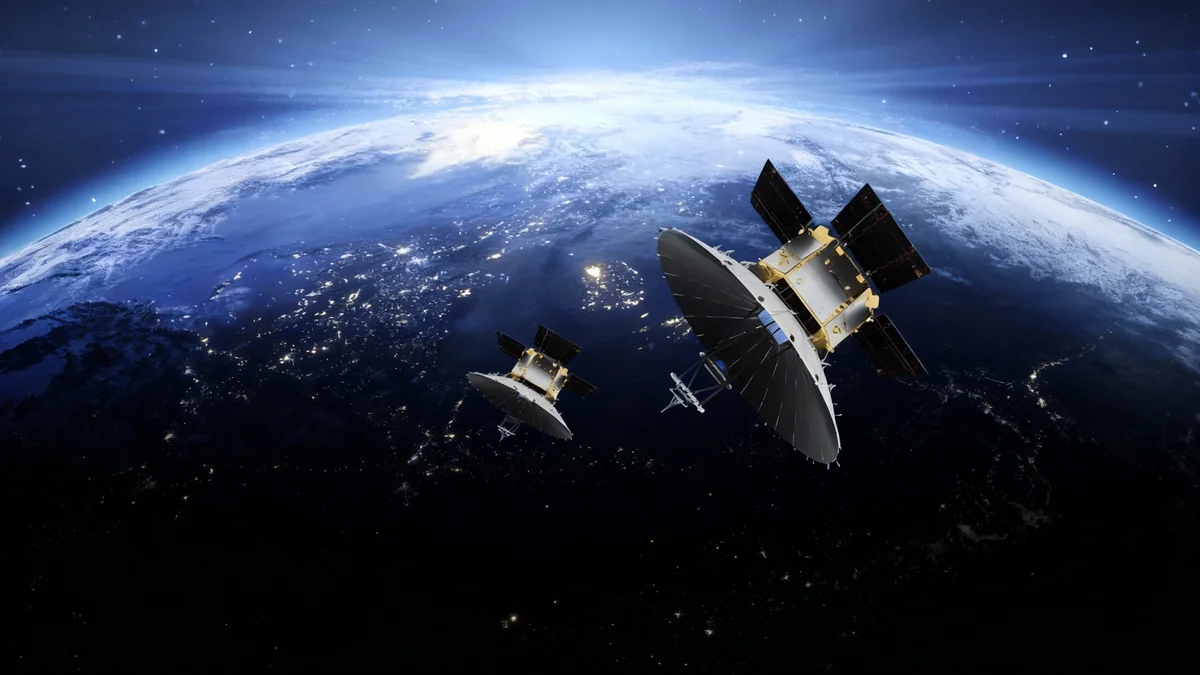The United States faces a critical challenge in space as China rapidly expands its technological and military capabilities beyond Earth's atmosphere. With the American space economy contributing nearly $241 billion in 2023, analysts are calling for urgent government action to protect national interests and maintain a competitive edge in what has become a new front line for global influence.
Concerns are mounting over Beijing's strategy, which appears aimed at dominating the commercial space market while developing dual-use technologies that could undermine U.S. infrastructure and military operations. These developments come as key U.S. space agencies, including NASA and the Office of Space Commerce, face leadership gaps and budget constraints.
Key Takeaways
- The U.S. space economy generated nearly $241 billion in direct gross output in 2023, highlighting its economic importance.
- China is aggressively pursuing commercial dominance and military capabilities in space, posing a direct challenge to U.S. leadership.
- Policy experts are recommending that space systems be designated as critical national infrastructure.
- Proposed actions include streamlining regulations, enhancing cybersecurity, and increasing funding for agencies like NASA.
The High Stakes of the Modern Space Race
Space is no longer a distant frontier explored by a handful of nations; it is an integral part of the global economy and modern warfare. This domain underpins essential services, from communication networks and financial transactions to energy grids and weather forecasting. For the United States, space-based assets are also fundamental to its national security, enabling precision-strike capabilities and forming the backbone of advanced missile-defense plans.
The economic impact is substantial. In 2023 alone, the U.S. space sector's direct economic output was valued at nearly $241 billion. This figure underscores the importance of maintaining a secure and thriving space industry, not just for scientific discovery but for continued economic growth and stability on Earth.
A Dual-Use Dilemma
Many space technologies are considered "dual-use," meaning they have both civilian and military applications. A satellite designed for commercial imaging can also be used for military surveillance. This ambiguity complicates international policy and increases the risk of miscalculation, as commercial advancements can quickly translate into strategic military advantages.
China's Strategic Ascent
China has made its space ambitions a national priority, investing billions to build a formidable launch sector and satellite infrastructure. Analysts warn that Beijing may leverage its state-controlled economic model to undercut the American private launch market, potentially forcing U.S. companies to become dependent on Chinese infrastructure, which could create vulnerabilities to espionage and disruption.
The military dimension of China's space program is a primary source of concern. Reports suggest the development of capabilities designed to conduct "blinding" attacks against U.S. satellites, effectively disabling critical American intelligence and communication assets during a conflict. Furthermore, there are allegations that China has provided satellite targeting data to nations like Russia and Iran, as well as to Iranian-backed groups such as the Houthis, enabling them to strike American interests with greater precision.
Global Reach
The proliferation of advanced space technology means that regional conflicts can be influenced from orbit. The alleged use of Chinese-provided targeting data by Houthi forces demonstrates how space capabilities can empower non-state actors and alter the dynamics of geopolitical disputes far from the provider's own borders.
A Call for a Coordinated U.S. Response
In response to these growing threats, security analysts are urging Washington to implement a multi-faceted strategy to secure its space systems. A key recommendation is for the current administration to officially designate space systems as critical infrastructure under National Security Memorandum 22. This would place them on par with the defense industrial base and public health sector, ensuring they receive priority attention and protection from the White House.
Under this proposal, NASA would be assigned as the lead federal partner to help private industry identify and mitigate risks. This collaborative approach aims to bridge the gap between government oversight and commercial innovation.
Streamlining Innovation and Regulation
To foster a more dynamic and competitive domestic space industry, experts also recommend that the Federal Communications Commission (FCC) continue to streamline its licensing processes. A proposed "licensing assembly line" could clarify standards and accelerate approvals for new technologies.
Another key suggestion is the creation of a new licensing category for "Variable Trajectory Spacecraft Systems." This would establish a predictable regulatory path for novel technologies such as:
- Lunar and planetary landers
- Orbital transfer vehicles
- In-space assembly and manufacturing platforms
By expediting the approval process for these innovative systems, the U.S. could diversify its space assets, create redundancy, and enhance its overall competitiveness against state-backed rivals.
Bolstering Physical and Cyber Defenses
The security of space infrastructure is paramount. With foreign adversaries actively seeking vulnerabilities, recommendations include tightening oversight on foreign investment. One specific proposal is to lower the threshold for mandatory reporting of foreign ownership in American space firms to just five percent. This would provide greater visibility into ownership structures that could be exploited by other nations.
"Future-proofing cybersecurity standards by prioritizing encryption adaptability will help address weaknesses related to the long-term nature of many space-based assets," noted a recent analysis from the Foundation for Defense of Democracies.
Mandating stronger and more adaptable cybersecurity standards is also seen as critical. Space assets often have lifespans measured in decades, making them vulnerable to future advancements in cyber warfare. Requiring adaptable encryption and robust data-sharing protocols among operators could prevent adversaries from accessing sensitive information and ensure safer operations in an increasingly crowded orbital environment.
Funding the Future
Ultimately, any effective strategy requires adequate resources. Analysts stress that agencies responsible for both commerce and innovation in space must be well-funded. The Office of Space Commerce, which plays a vital role in preventing satellite collisions, has faced recent budget cuts that could put valuable assets at risk.
Similarly, a well-funded NASA is essential. The agency not only drives scientific discovery but also acts as a major government customer, stimulating the private sector and pushing the boundaries of innovation. Current leadership vacancies and challenges in its flagship Artemis lunar program highlight the need for consistent support. Without robust investment in these core institutions, the U.S. risks ceding its innovative edge and losing its footing in the final frontier.





